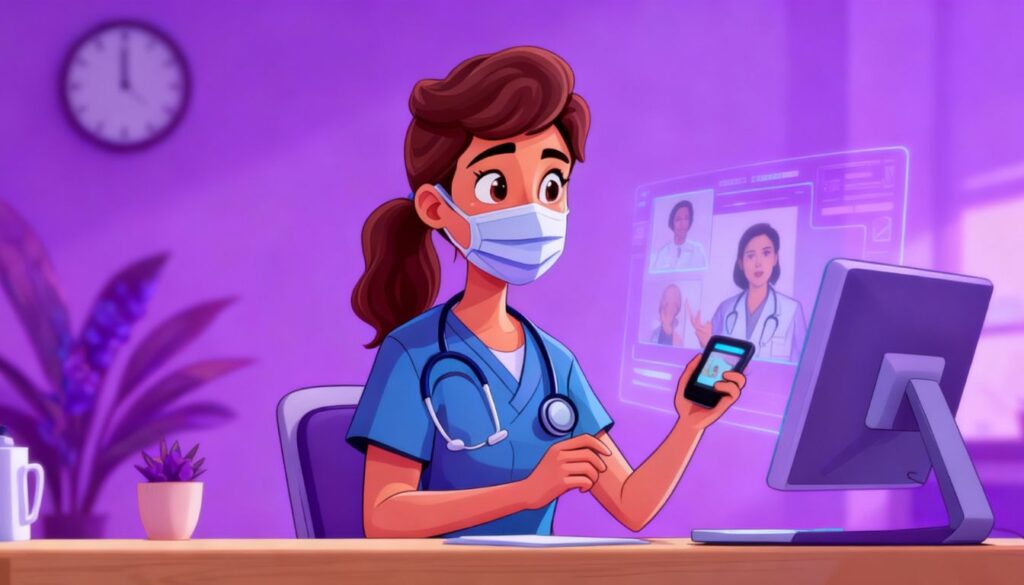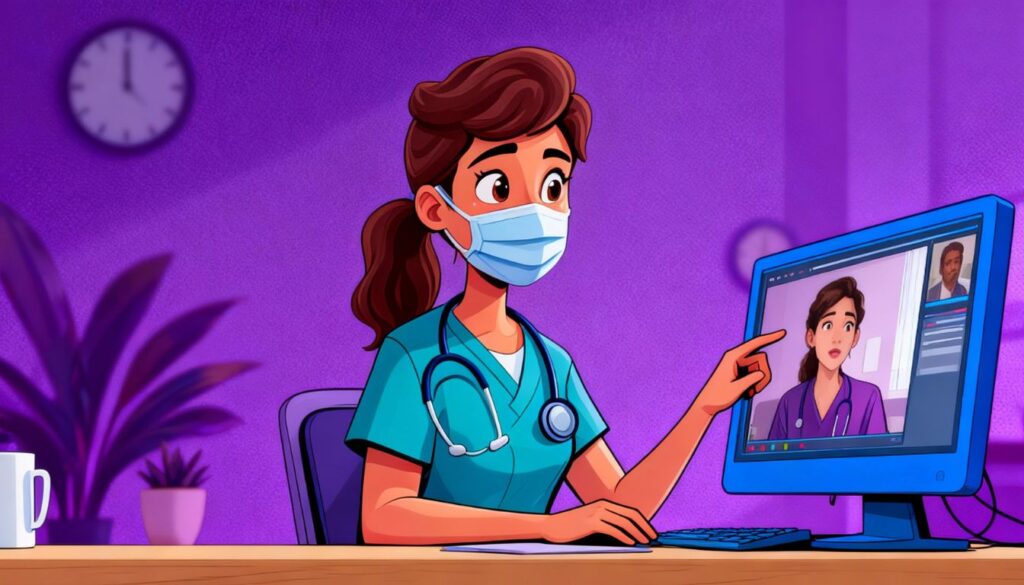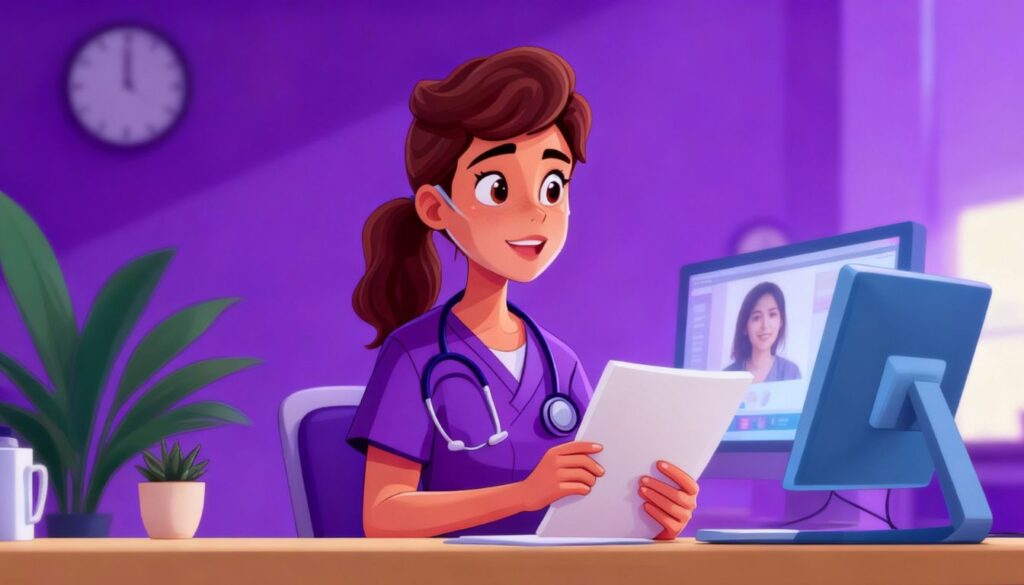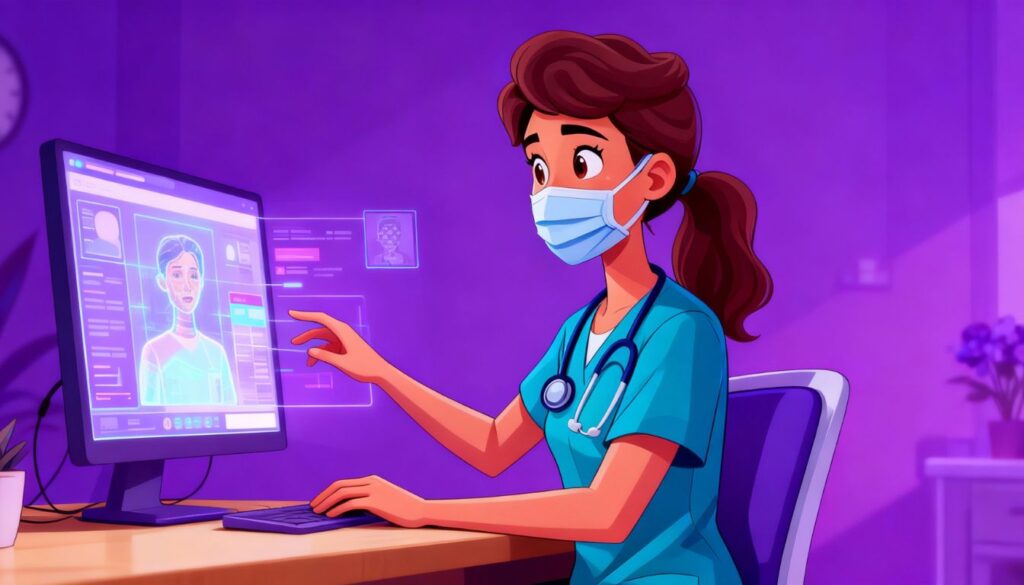What Is Virtual Primary Care? Understanding Its Benefits and Impact
15 Oct 2025 By: Vlade Legaspi
Updated

Healthcare has changed a lot in recent years. Technological advances and shifting patient needs have driven this transformation. One key development stands out. Virtual primary care has risen as a major part. This model uses digital tools for remote services. It aims to make care accessible, efficient, and tailored to individuals.
What is Virtual Primary Care? It delivers primary healthcare through online platforms. Patients connect with providers via video, chat, or apps from anywhere. This approach addresses traditional barriers like distance or busy schedules. Evidence shows it improves access for many. Still, questions remain about its full potential. Why does it matter so much now? It fits into modern medicine as a core element. This piece looks closely at the idea. Benefits come into focus first. Then challenges appear. The overall effects touch patients, doctors, and the entire system.
Defining Virtual Primary Care: More Than Just Telemedicine

What is Virtual Primary Care? People tend to mix it up with telemedicine quite a bit. The two terms do not mean exactly the same thing. Telemedicine involves using communication technologies to provide medical care from a distance in general terms. Virtual primary care takes a broader view. It focuses on overseeing a patient’s complete health needs with online tools and systems.
Studies point out that this approach helps build ongoing relationships between doctors and patients through digital means. It might even improve access for those in remote areas. Evidence shows virtual primary care goes beyond just occasional visits. It covers routine checkups, preventive advice, and long-term monitoring all in one place.
What is virtual primary care? Evidence indicates that it relies on video consultations, secure messaging, remote monitoring tools, and electronic health records to deliver ongoing, coordinated healthcare services.
Studies show this approach covers routine examinations, management of chronic conditions, preventive measures, mental health assistance, and urgent needs. It appears to minimize in-person appointments, except when they prove essential.
What is virtual primary care? This approach seeks to mirror the standard primary care setup. At times it goes further and improves on it. Healthcare becomes easier to access and more practical that way.
Evidence points to real benefits for patients dealing with obstacles. Things like living in remote areas come to mind. Or facing limits with getting around. Schedules that leave little room for appointments play a role too.
Patients connect with providers right from home. That setup eases the burden of trips and crowded waiting spots. Stress levels drop noticeably as a result. Satisfaction among patients tends to rise. They gain a stronger sense of managing their own health path.
Timely care arrives more readily when issues arise.
Key Components of Virtual Primary Care
Virtual primary care integrates several digital tools and services, including:
- Video and Phone Consultations: Real-time interactions between patients and providers, enabling diagnosis, treatment, and follow-up care.
- Asynchronous Communication: Secure messaging platforms allow patients to ask questions, request prescription refills, or share updates without waiting for an appointment.
- Remote Patient Monitoring: Devices such as blood pressure cuffs, glucose monitors, and wearable fitness trackers transmit health data to providers for ongoing assessment.
- Electronic Health Records (EHRs): Digital records that store comprehensive patient information, facilitating coordinated care and easy access for both patients and providers.
Virtual primary care extends beyond basic elements by highlighting patient education and involvement. Platforms frequently provide materials like health articles, video guides, and interactive features. These tools help patients manage their own well-being more actively.
Evidence indicates that well-informed individuals tend to follow treatment regimens better. They also adopt lifestyle adjustments that improve overall results. Moreover, some systems incorporate artificial intelligence and machine learning. This development supports tailored advice on health matters.
Patients find it simpler to handle their care choices this way.
What is virtual primary care? It often brings lower expenses for individuals and medical organizations alike. It cuts down on requirements for face-to-face appointments. People avoid costs related to travel and lost work hours. Health services can direct funds to higher-priority areas more effectively.
The approach eases pressure on emergency departments and walk-in clinics. Those places can address severe situations without distraction. As this form of care advances further, it seems poised to influence healthcare provision significantly.
The shift promotes a focus on patient needs across varied groups.
The Growing Demand for Virtual Primary Care

The landscape of healthcare has changed quite a bit in recent years. The COVID-19 pandemic played a big role in that shift. It sped up how quickly virtual care options caught on.
A report from the American Medical Association in 2023 points out that telehealth use has settled at rates about 38 times higher than pre-pandemic levels. Virtual primary care seems to be out in front on this trend.
What is virtual primary care? It offers patients more convenience and options for when they need care. Providers see it as a way to boost results and cut down on expenses. Evidence indicates that this approach tackles key issues in the system.
Things like access in remote areas come to mind. Still, it appears to help with overall efficiency too.
Overcoming Geographic and Mobility Barriers
What is virtual primary care? It offers remote medical services through technology. Rural populations face real challenges in reaching quality primary care. Those with limited mobility deal with the same issues.
Virtual care removes travel demands and cuts transportation expenses. This setup lets these groups get medical help without delay.
Studies in the Journal of Rural Health point to one example. Virtual primary care raised appointment follow-through by 25 percent for rural patients. Such access might catch chronic conditions sooner. Delays in care tend to make those problems worse. Evidence indicates better outcomes overall.
Integrating virtual primary care lifts daily life for affected people. It pushes toward fairer healthcare arrangements across the board.
Meeting the Needs of a Busy Population
What is virtual primary care? It addresses the challenges of increasingly hectic modern lifestyles. Evidence indicates that numerous individuals struggle to arrange in-person medical appointments within standard office times.
This form of care provides versatile booking possibilities. Options include sessions during evenings or weekends. Such arrangements better suit varied professional obligations and household duties.
The flexibility proves especially helpful. Parents handling child-rearing responsibilities often appreciate it. Workers in high-pressure roles rely on it too. Those coordinating several daily demands find it practical.
Further, asynchronous methods like protected messaging or electronic consultations enable interactions with clinicians on patients’ own terms. This setup encourages greater initiative in overseeing personal well-being.
Addressing Physician Shortages and Burnout
The United States could see a shortage of as many as 55,200 primary care physicians by 2033. That projection comes from the Association of American Medical Colleges.
What is virtual primary care? It involves platforms that ease this kind of pressure in several ways. They streamline daily workflows for doctors. Team-based care becomes easier to manage.
Administrative tasks get cut down quite a bit. All that leads to better satisfaction among providers. Retention rates might improve as a result. Telehealth tools seem to support stronger teamwork in healthcare. Specialists and primary care doctors can share information without much hassle. Care coordination flows more smoothly overall.
Evidence points to improved patient results from this setup. It also reduces isolation for physicians. Burnout feels less overwhelming compared to old-school practices. Studies indicate these shifts make a real difference in the field.
Benefits of Virtual Primary Care for Patients

Virtual primary care offers numerous advantages that enhance the patient experience and promote better health outcomes.
Convenience and Accessibility
What is virtual primary care? It seems to offer clear advantages in terms of convenience, allowing patients to receive treatment directly from home or their workplace.
Evidence indicates that individuals no longer face the need to miss shifts at work, handle childcare logistics, or sit through lengthy delays in packed waiting areas.
This kind of straightforward access tends to foster steadier participation in medical routines. Such participation appears vital for early detection efforts and ongoing oversight of persistent health issues.
Studies show virtual primary care holds special value for people in isolated rural zones or regions with sparse medical resources, spots where reaching a clinic often proves challenging.
There, connections form easily with expert consultants and routine doctors, all without demanding hours on the road. Healthcare in this setup grows more balanced overall. It extends reach to broader groups in practical ways.
Improved Chronic Disease Management
Chronic conditions like diabetes, hypertension, and asthma demand steady monitoring along with quick responses to changes.
What is virtual primary care? It offers a way to keep track of patients using remote devices that send data regularly. Providers can then pick up on early signals of trouble and make adjustments to treatments without delay.
Evidence from a study in Diabetes Technology and Therapeutics points to clearer benefits. Patients handling diabetes through virtual options saw their HbA1c levels fall by an extra 0.5 percent over those in usual in-person setups.
This kind of approach seems to build on real-time insights from wearables linked to telehealth systems. Such tools deliver ongoing information straight to clinicians. In turn, care becomes more tailored to individual needs. The shift moves health management toward prevention rather than just reacting to problems as they arise.
Enhanced Patient Engagement and Education
Digital platforms typically offer educational materials along with tailored health alerts and hands-on features. These elements help patients get more involved in managing their own well-being.
Studies show that when patients stay engaged this way, they follow treatment regimens more closely. They also adopt habits that support better overall health.
In the end, such involvement points to stronger results over time. Virtual primary care often sets up group meetings or online seminars on different wellness subjects.
Patients can pick up insights from specialists there. They connect with others dealing with comparable issues too.
What is virtual primary care in this context seems to build a supportive network. That kind of shared experience proves quite helpful for keeping people on track with their personal health aims.
Reduced Exposure to Infectious Diseases
Virtual visits help cut down the risk of catching contagious illnesses. This advantage stood out clearly during the COVID-19 pandemic. It matters a lot for people with weakened immune systems or other health issues.
Evidence shows that virtual primary care eases the load on medical centers this way. Those places can then direct their efforts toward patients needing urgent, direct treatment.
The convenience of these appointments might prompt individuals to get help earlier. That could stop problems from worsening due to worries about picking up infections at a clinic.
What is virtual primary care exactly? It offers this kind of practical support in everyday health management.
Benefits of Virtual Primary Care for Healthcare Providers

Providers also gain significant advantages from adopting virtual primary care models, which can transform clinical practice and improve job satisfaction.
Increased Efficiency and Flexibility
What is virtual primary care? Platforms for this kind of care help streamline scheduling along with documentation and communication between everyone involved.
Providers end up seeing more patients that way. Quality does not suffer at all. Flexibility comes in when visits happen from different locations.
Work-life balance improves for sure. Adaptability cuts back on administrative time spent each day. Providers gain power to shape their own workspaces based on what fits them best.
Home setups work fine. Dedicated offices suit others. Healthcare workers overall get a shot at more balanced lives. Burnout rates drop noticeably. Job satisfaction picks up too.
Better Data-Driven Decision Making
Research suggests that ongoing data gathering from remote monitoring tools and linked electronic health records offers a more detailed view of patient health.
This setup seems to support sharper diagnostic decisions along with treatments tailored to individual needs, which in turn boosts overall care standards.
It appears that sifting through vast amounts of patient information helps clinicians spot trends and patterns often missed in standard office visits.
What is virtual primary care involves this kind of data focus, potentially driving better results for patients and stronger handling of long-term illnesses.
In the end, such methods encourage a shift toward forward-looking health strategies instead of just responding after issues arise.
Expanded Reach and Patient Base
What is virtual primary care anyway? It’s this setup that just smashes through those location walls, you know, so doctors can help out patients way far from their own town.
That kind of reach opens up more ways for them to earn some extra money and build their careers a bit.
Oh and reaching those folks in tough spots with no real doctor access nearby, that part feels pretty rewarding I mean. By doing virtual stuff like that, providers help make health fairer for everybody, making sure patients get the care they actually need no matter where they’re stuck.
It boosts their good name around the area too, and really drives home why healthcare should be open to all of us.
Challenges and Considerations in Virtual Primary Care

Virtual primary care has a lot going for it, but it comes with some real hurdles too.
Getting a handle on these problems matters a ton for patients, doctors, and the folks making policies, so we can roll it out safely and make it work right.
Technology Access and Digital Literacy
Not everyone has solid internet or the right gadgets for virtual visits. Plus, some people just do not know how to handle those telehealth apps all that well.
We need to fix that digital gap quick, or it will just make health inequalities worse.
Things like free Wi-Fi at libraries or classes on tech for doctor stuff could really help folks get involved. Doctors can pitch in too by keeping things simple on their end and having support people ready to guide patients through it all.
Privacy and Security Concerns
Dealing with health info online brings up big worries about keeping data safe and private. Places like hospitals have to stick to rules like HIPAA and pour money into strong security setups.
Telling patients how to protect their own details is key as well. They ought to hear about the dangers of putting health stuff out there and learn to use good passwords with that two-step login thing.
With hackers getting sneakier all the time, staff need regular training on protecting info to keep everyone trusting the system.
Limitations in Clinical Assessment
Some health issues demand hands-on checks or tests you cannot do from afar. Doctors have to figure out when a real visit in person is a must for full care.
Take heart problems, for example; they often need that up-close look. Not being able to draw blood or do scans right away can push back important findings too.
Maybe mixing virtual talks with set in-person spots could sort this out, giving care that fits what patients want and what medicine really needs.
Reimbursement and Regulatory Issues
Insurers cover virtual care more these days, but the payment rules differ a lot and get complicated fast. The laws around it are still changing, so healthcare people have to keep pushing and adjusting.
As this stuff weaves into everyday doctor work, leaders need to set straightforward rules for fair pay no matter the state or plan. Same goes for standard ways to code these services, so providers get what they deserve.
Talking it out with insurance bigwigs and regulators will help build a setup that lasts and helps patients and doctors both.
The Future of Virtual Primary Care: Trends and Innovations

Virtual primary care is really starting to shape up as a big part of how we get healthcare these days. It’s all thanks to ongoing innovations and what patients actually want now.
Integration with Artificial Intelligence and Machine Learning
When it comes to AI and machine learning, those tools are making virtual care way better. They help with diagnosing stuff, spotting health risks ahead of time, and even tailoring treatments to fit each person.
Take AI algorithms, for instance. They go through data from remote monitoring and flag early warning signs for doctors. Then there’s natural language processing. It smooths out talks between patients and providers, making notes and follow-ups quicker.
This tech picks out main symptoms from chats, so providers get the key details right away.
Expansion of Remote Monitoring Technologies
Remote monitoring tech is expanding too, with wearables and home kits getting smarter and cheaper. That means better tracking of health overall.
It pushes for handling issues before they blow up, and jumping in early. Things like continuous glucose monitors or smart blood pressure cuffs let people manage their own health right at home.
Plus, linking these to telehealth apps shares data live with providers. It creates this team effort in care that often leads to stronger results for patients.
Hybrid Care Models
Hybrid models are coming into play more, mixing virtual and face-to-face care to get the best outcomes. They give flexibility, matching care to what patients need, where and when it fits.
This setup handles different patient situations and eases up on crowded clinics. Routine stuff can happen online, say check-ups. But tougher cases go in person. It boosts how efficiently care runs and leaves patients happier.
Focus on Health Equity
Health equity is getting a real push here, especially for virtual primary care reaching underserved folks. That means building easy-to-use platforms, spreading broadband wider, and tweaking services for different cultures.
Community programs are popping up to teach these groups about virtual care perks. Teaming with local spots helps providers make sure people know about it and have the tools to use it.
As systems work to close access gaps, focusing on including everyone will define how virtual primary care evolves.
Trending Now!
Life gets pretty busy these days. And squeezing in those doctor appointments is not always easy. The Atrium Health Primary Care Family Medicine Virtual service makes things simpler by letting you handle care right from home. You can book sessions with reliable doctors and deal with a bunch of health problems online. This setup fits folks who have regular medical stuff going on or travel a lot or just feel okay with technology. Those virtual doctors handle everyday sicknesses and keep track of long-term conditions and even renew meds all without you showing up in person. When something more complicated comes up they link you straight to specialists you can see face to face through the Atrium setup.
What is virtual primary care? Building solid connections with your virtual doctor really helps the whole process. Sticking with the same one creates trust and makes it easier to look after your own health in a personal way. Atrium has a dedicated group of full time providers who know how to deliver complete care that covers everything. They dig into the details by asking good questions and paying attention to your entire background. Plus the whole thing connects you to testing labs and quick care spots and expert referrals when needed. Caregivers dealing with older parents find these virtual check ins a real time saver. They cut down on hassle too by skipping the drives and those endless waiting rooms.
Conclusion: Embracing a New Era of Primary Care
Virtual primary care is really changing up how we do healthcare these days. You know, it mixes tech right in with the basics of primary care like keeping things continuous, covering everything, and putting patients first.
That combo tackles a bunch of the problems we have now in health stuff.
As more folks start using it, patients get care that’s way more handy and tailored to them, even proactive in a good way. Providers pick up on better efficiency too, and they can reach more people.
Still, we gotta sort out issues with getting tech, keeping privacy safe, and dealing with rules to make this thing work fully.
In the end, virtual primary care isn’t some quick fix from the pandemic. It’s a real shift that’ll help improve health for tons of people worldwide, making things fairer too.
Ready to take charge of your health with care that fits your life? Join Helpsquad Health today and see how virtual primary care puts you first—every step of the way.


